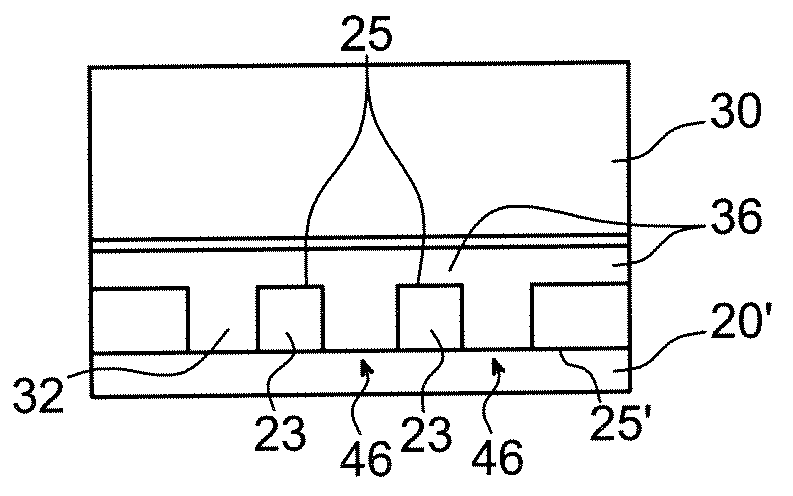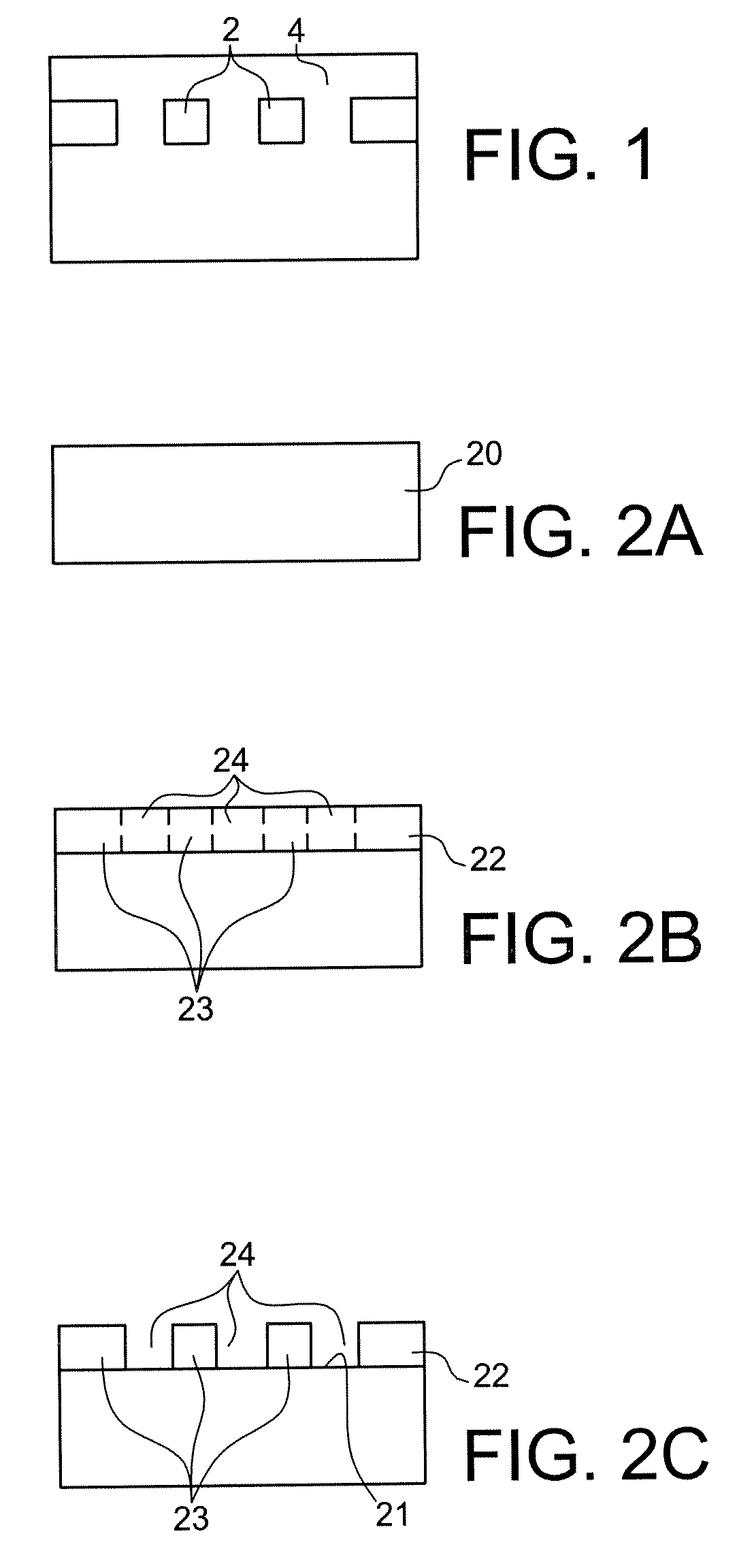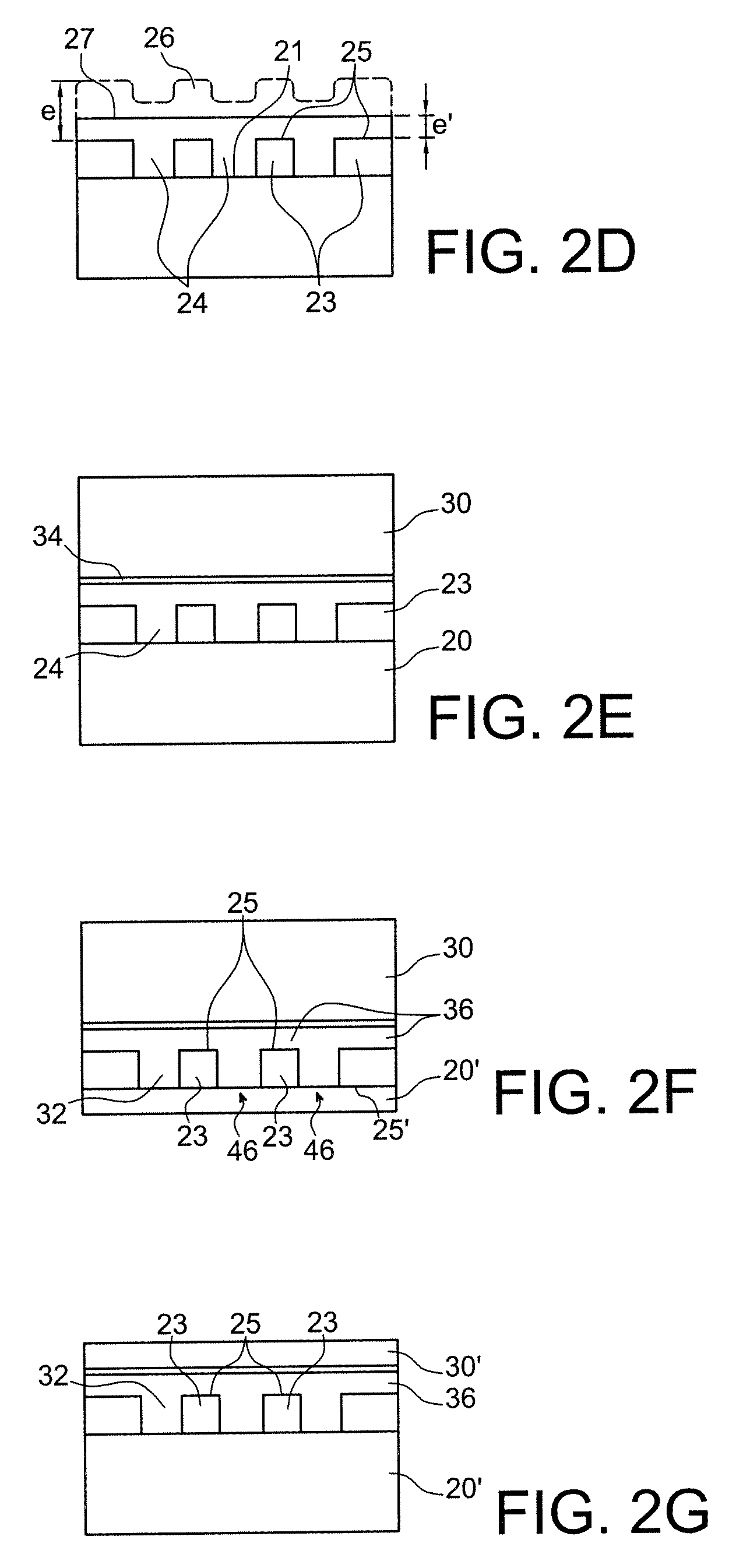Method for producing partial soi structures comprising zones connecting a superficial layer and a substrate
a technology of surface layer and substrate, applied in the direction of microstructured devices, microstructured technology, microstructured devices, etc., can solve problems such as heterogeneous surface conditions
- Summary
- Abstract
- Description
- Claims
- Application Information
AI Technical Summary
Benefits of technology
Problems solved by technology
Method used
Image
Examples
example 1
[0078]In this example, the following steps are performed:[0079]a1) thermal oxidation of a silicon substrate 20, for example by generating 2 μm of oxide;[0080]b1) lithography of the patterns 24 to define future SOI and Si zones;[0081]c1) etching of the oxide 22 at the level of the future Si zones defined and removal of the etching mask;[0082]d1) cleaning of the surface and deposition of a polycrystalline silicon (p-Si) layer 26 by LPCVD (at around 650° C.), for example, deposition of a layer having a thickness of around 4 μm;[0083]e1) heat treatment at 1100° C.;[0084]f1) planarisation of the p-Si surface 26 so as to remove the topology between the SOI and Si zones by chemical-mechanical polishing; however, one remains on a homogenous poly-Si surface, and never move onto a heterogeneous SiO2 / Si surface;[0085]g1) hydrophilic-type cleaning and placement in contact for direct bonding by molecular adhesion of the substrate 20—pattern 23—layer 26 assembly and a silicon-free substrate 30;[0...
example 2
[0088]In this example, the following steps are performed:[0089]steps a2 to c2: same as steps a1 to c1.[0090]d2) cleaning of the surface and deposition of an amorphous silicon (a-Si) layer 26 by PECVD, for example, deposition of a layer having a thickness of around 5 μm;[0091]e2) heat treatment at 1100° C.;[0092]f2) planarisation of the a-Si surface 26 so as to remove the topology between the SOI and Si zones by chemical-mechanical polishing;[0093]g2) hydrophobic-type cleaning and placement in contact for direct bonding by molecular adhesion of the substrate 20 and a silicon-free substrate 30;[0094]h2) same as h1;[0095]i2) thinning of the rear surface of the substrate 30 by mechanical grinding, then by chemical-mechanical polishing, for example until a thickness of 20 μm is obtained. A structure as shown in FIG. 2G is thus obtained.
example 3
[0096]In this example, the following steps are performed:[0097]a3) thermal oxidation of a silicon substrate 20, for example by generating 3 μm of oxide;[0098]b3) to c3) : same as b1) to c1);[0099]d3) cleaning of the surface and deposition of a polycrystalline silicon (p-Si) layer 26 by LPCVD (at around 650° C.), for example, deposition of a layer having a thickness of around 7 μm;[0100]e3) same as e1);[0101]f3) planarisation of the p-Si surface 26 so as to remove the topology between the SOI and Si zones by dry polishing, then surface finishing by chemical-mechanical polishing;[0102]g3) to h3) : same as g1) to h1);[0103]i3) thinning of the rear surface of the substrate 20 by mechanical grinding, then by chemical-mechanical polishing, for example until a thickness of 20 μm is obtained. A structure as shown in FIG. 2F is thus obtained.
PUM
 Login to View More
Login to View More Abstract
Description
Claims
Application Information
 Login to View More
Login to View More - R&D
- Intellectual Property
- Life Sciences
- Materials
- Tech Scout
- Unparalleled Data Quality
- Higher Quality Content
- 60% Fewer Hallucinations
Browse by: Latest US Patents, China's latest patents, Technical Efficacy Thesaurus, Application Domain, Technology Topic, Popular Technical Reports.
© 2025 PatSnap. All rights reserved.Legal|Privacy policy|Modern Slavery Act Transparency Statement|Sitemap|About US| Contact US: help@patsnap.com



